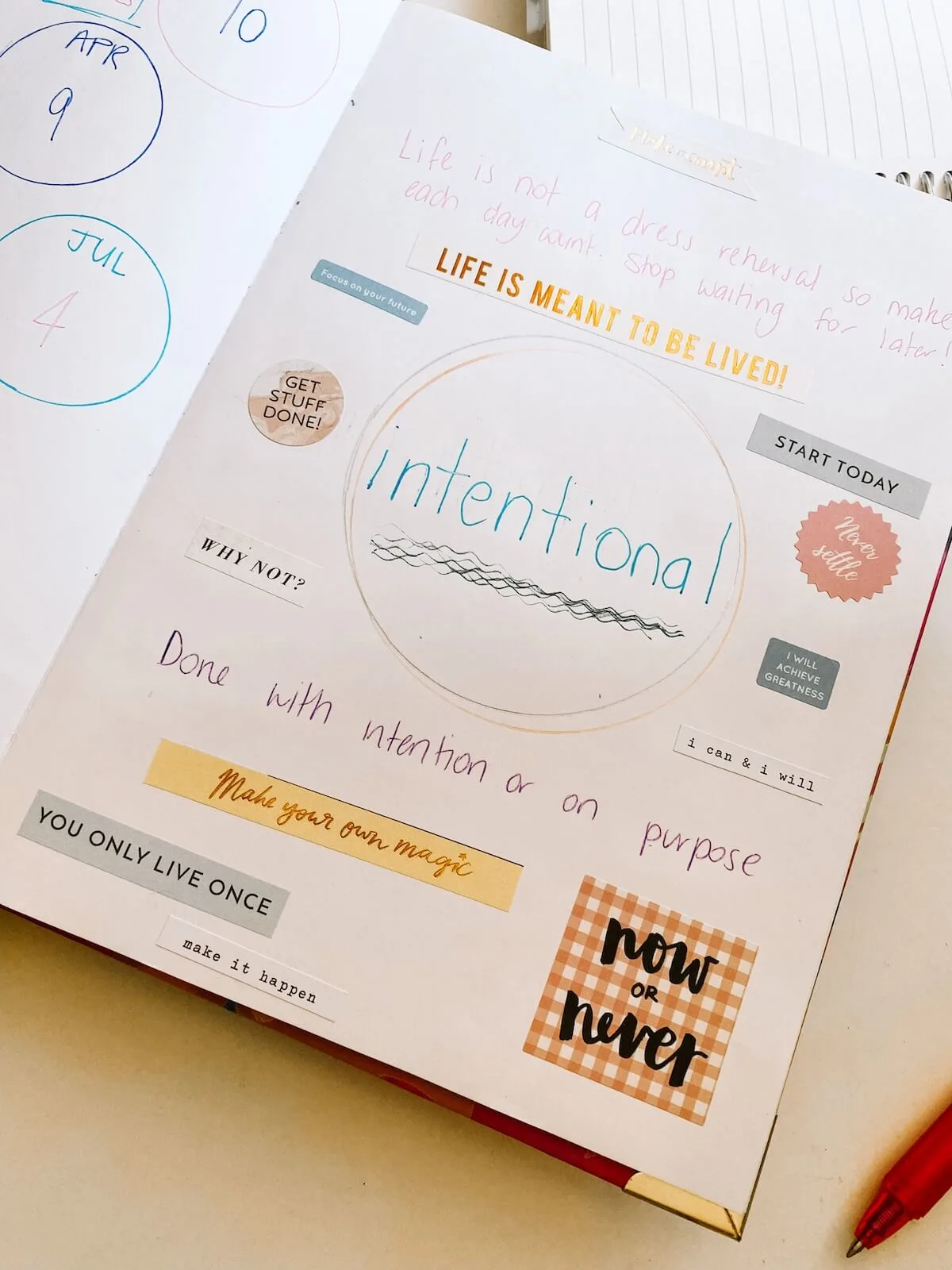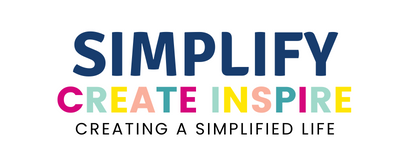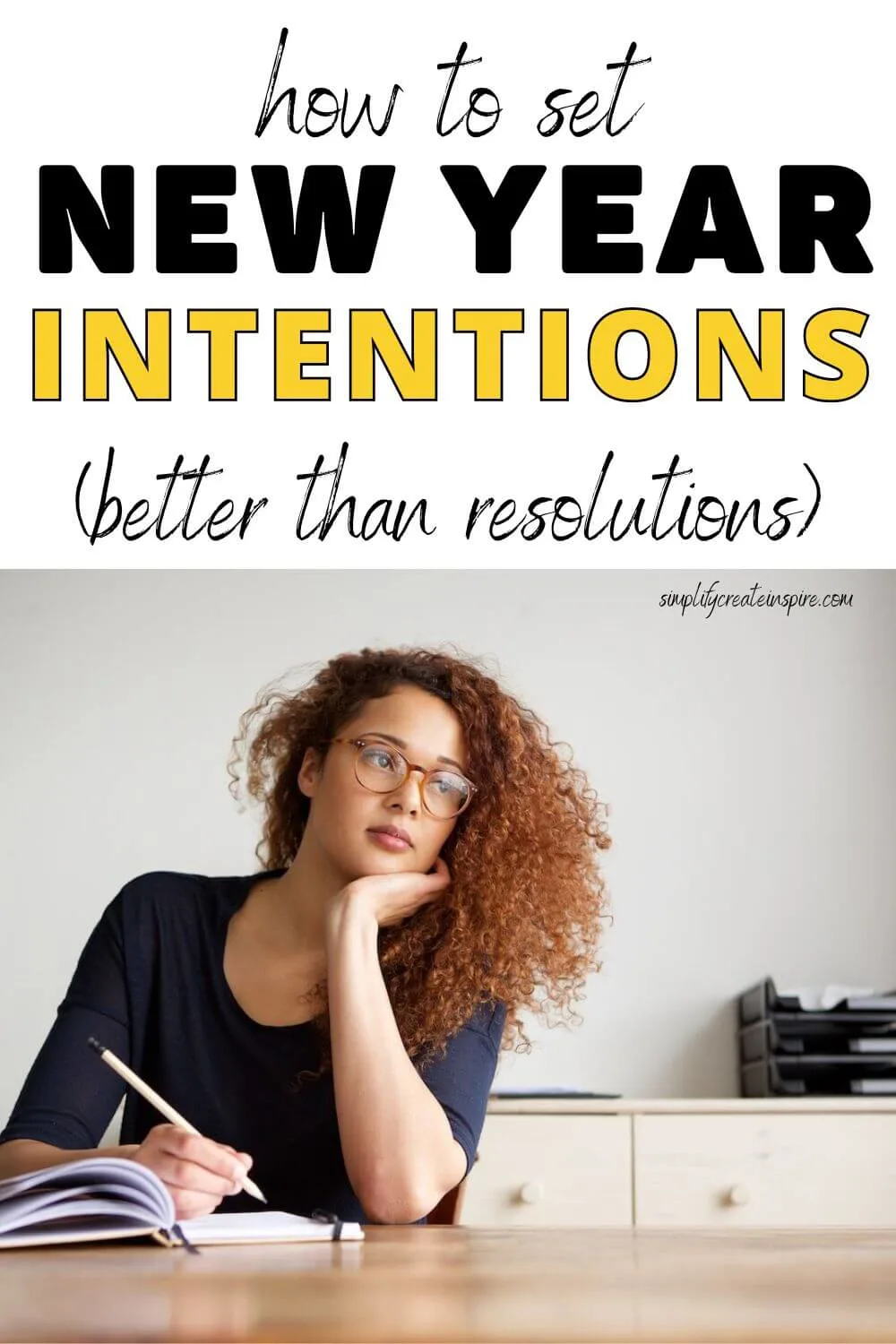How to set intentions for the new year that you will actually stick with while being more intentional with your time so you can do more of the things that bring you joy. If you’ve previously had little success with your new year goals and you’re ready to try a new approach, this guide will help you do exactly that – set intentions for the year ahead and the life you want.
The new year is the perfect time to reflect on your life, make positive changes, and create new goals and habits.
Although many people set New Year’s resolutions, they often fail to follow through, leading to feelings of guilt and disappointment. Instead of setting resolutions this year, why not try setting New Year intentions instead? It can help you stay focused and motivated on what really matters.
What Are Intentions?
Intentions are a way of setting a positive direction for your life. They are powerful tools that allow you to focus on what you want to achieve and help you to make decisions that align with your values and vision.
Intentions are different from goals or resolutions since they are not focused on specific achievements but on how you want to feel and what you want to cultivate in your life.
You may have heard the term intentional living, which is essentially living with purpose and making conscious choices to create the life you want.
Setting intentions for the new year is a way of practising intentional living and can have a positive impact on your overall well-being and happiness.
New Year’s Resolutions Vs New Year Intentions
New Year’s resolutions are specific goals that people set for themselves at the beginning of the year. While they can be effective, they often come with a lot of pressure and expectations, leading to disappointment when not achieved.
Some common examples of New Year resolutions include losing weight, saving money, or quitting a bad habit.
While these are all admirable goals, they often focus on the outcome rather than the journey – without considering the actionable steps you need to get there.
On the other hand, New Year’s intentions allow for more flexibility and self-compassion. They are about setting a positive direction for your life and being open to different paths to reach that destination.
For example, instead of setting a goal to lose weight, you can set an intention to prioritise your health and well-being.
This may involve making healthier food choices, such as meal prepping every Sunday afternoon for the week ahead or incorporating more physical activity into your routine and regular weekly self-care sessions.
The focus is not solely on the number on the scale but on creating a healthier and more fulfilling lifestyle. They are more about creating micro habits that stay aligned with your end goal.
Benefits of Setting New Year Intentions

One of the best ways to make positive change in your life is to set your own intentions at the start of a new year, although mindful intentions can be set at any time of the year if you haven’t set yours in the first month of the year.
Here are some of the main benefits of setting intentions for the new year instead of resolutions:
- More Holistic Approach – Unlike resolutions, intentions take into account all aspects of your life, including physical, mental, emotional and spiritual well-being. This allows for a more well-rounded approach to self-improvement rather than solely focusing on one specific area.
- Focus on Progress, Not Perfection – Intentions are not about achieving a specific outcome but rather making progress towards it. This shift in mindset allows for self-compassion and understanding that change takes time and effort.
- Flexibility and Adaptability – Life is unpredictable, and sometimes things don’t go as planned. Intentions allow for flexibility and adaptability in your journey towards self-improvement. If one method or approach isn’t working, you can pivot and try something else that aligns with your intention.
- Sustainable Habits – Resolutions often involve drastic changes that can be difficult to maintain in the long run. Statistics show that New Year’s resolutions failure rate is as high as 80%, with most people falling off track by mid-February. Intentions, on the other hand, focus on creating sustainable habits that can be incorporated into your daily life.
- Mindful Reflection – Setting intentions requires introspection and reflection, allowing you to become more self-aware and understand what truly matters to you. This can lead to a greater sense of purpose and direction in life.
- Positive Mindset – Intentions are rooted in positivity and self-growth rather than focusing on negative aspects or flaws that need to be fixed. This positive mindset can lead to increased motivation, resilience, and living in a place of gratitude.
How To Set Intentions For The New Year
When it comes to setting intentions for a new year, the key is to consider what truly matters to you and align your intentions with your values and goals. Here are 6 steps to help you set intentions for the upcoming year:
1. Reflect On The Past Year
Take some time to reflect on the previous year, including accomplishments, challenges, and lessons learned and consider how you feel about the previous year.
Looking back at last year can help you identify areas of your life that you may want to improve or focus on in the upcoming year. It gives you the chance to rate each area of your life, such as physical health, financial wellness, relationships and career.
2. Identify Your Core Values
Think about what is most important to you and what you value in life. This can help guide your intentions and ensure they are aligned with your personal beliefs and principles. It will also give them a deeper meaning.
Your planned new intentions won’t stick if you’re allowing other people’s expectations for you to influence your intentions. Make sure your intentions are truly what you want for yourself.
For example, one of my core values is being intentional with my time and how I spend it. So, one of my intentions for the new year might be to prioritise family time with my husband and kids and set aside time for activities that bring me joy. It also means I want to be less distracted and therefore I need to set a limit on my screen time and plan my work time so that it doesn’t just end up being ‘busy time’.
You may decide you only have 2 or 3 core values or you may identify 5 or 6. There is no right number here, so long as you find the values that feel authentic to you.
3. Choose What To Focus On
As much as we would all love to improve all areas of our lives at once, it’s just not realistic!
That’s why it’s important to choose just some of the areas that you want to focus on in the upcoming year. This will help you stay motivated and not spread yourself too thin.
Think about what is most important to you right now and what would have the biggest impact on your life if you were to improve in that area. It could be anything from health and wellness, to career and personal growth, to relationships and self-care.
Remember that you can always prioritise and focus on other areas later on in the year or even in the following years. The key is to start with what feels most important and manageable for you at this moment.
I’m not going to tell you to choose just one area of focus either (unless you want to). As a ridiculously ambitious person myself, I know that just one isn’t enough so you might like to choose 2 or 3 if that feels achievable for you.
This is also why it’s important to start with the reflection exercise in step 1, so you know what did and did not work in your life recently and can use that knowledge to define your areas of focus.
4. Set Your New Year’s Intentions
Once you have identified your core values, think about specific goals that align with them.
It’s important to make your intentions specific and achievable. This can help you stay focused and motivated throughout the year.
Instead of setting a broad intention like “be healthier,” try considering intentions more in line with how you want to feel and who you want to be.
For example, “prioritise my physical and mental well-being” is more specific and it focuses on the person you want to be – someone who chooses physical activity, self-care, healthy eating and boundaries.
By setting intentions rather than resolutions, you are focusing on the process and journey rather than just the end result. This allows for more flexibility and self-compassion if things don’t go exactly as planned.
Choose intentions that feel good! If it feels cringy or unattainable, it will instantly become demotivating.
It’s important to remember that intentions are not set in stone either. If you find that a particular intention is no longer serving you, feel free to adjust or even change it completely at any point during the year.
Keep referring back to your core values and use them as a guide when setting intentions. This will help ensure that your goals align with
5. Make Your Intentions Visual
Putting your intentions into writing or any form of visual representation can help make them feel more real and tangible.
You can create a vision board, write them in a journal, or even make a mind map to connect your different intentions together with you in the centre becoming the person you want to be.
Having your yearly intentions in a place where you will see them daily is a good practice.
A sticky note on your computer screen, your phone background, a vision board in your home office or written daily as part of your morning journal practice or at the top of your planner.
Turn your intentions into a daily affirmation you can display on the mirror and repeat in the morning.
I also find having a word of the year can help keep the intentions front of mind.

For example, my word of the year in 2023 was ‘Intentional‘ with a focus on being purposeful with my time and to stop holding back on the things I wanted to achieve. As such, I made bigger business goals and did my best to boot imposter syndrome out the door.
For 2024, my word of the year is ‘shift‘, knowing that it is a period of transition in both the way I run my business and aligning with the goal of buying a new home at the end of the year.
Choose whatever method works best for you and keep it somewhere visible so you can refer back to it throughout the year.
6. Reflection and Reassess
As the year progresses, it’s important to regularly reflect on your intentions and reassess if they are still in line with your core values and overall goals.
Life is constantly changing and what may have been a priority at the beginning of the year may no longer hold the same weight.
Take some time each month to reflect on your progress towards your intentions and make any necessary adjustments. This can also mean you need to set boundaries if your specific intentions aren’t being met.
It’s also important to not be too hard on yourself if you haven’t stuck with all of your intentions by the end of the year.
Intention setting is a journey and it’s about making progress, not perfection.
Tips For Turning Your Intentions Into Habits
Setting intentions is the first step, but turning them into long-term habits requires effort and diligence.
While we can certainly build goals and habits from our intentions, they don’t work quite the same way as concrete resolutions or goal-setting.
To create healthy habits from your intentions, you need to be specific about the things you need to do to live in alignment with your intentions.
Setting SMART goals is the best way to do this – Specific, Measurable, Attainable, Realistic and Time-Bound.
If we come back to the intention to prioritise your health and well-being, consider what you would do to make this a reality and how you would feel.
- Regular exercise each week could turn into a habit of moving your body each day or 3 walks a week
- Taking care of your mental health can be a daily habit of writing in your journal
- Prioritising self-care can be a habit of reading for 15 minutes each day or doing 5 minutes of yoga
When you break it down like this, you can identify the habits that need to be formed in order to live out your intentions.
The key is to start with small steps and be consistent, building upon these habits slowly over time.
And it’s perfectly fine if you only want to start one small habit in the beginning.
This can lead to a snowball effect, as one habit naturally leads to the next as you habit stack and they become a part of your routine.
Remember that it takes time for habits to form, so don’t beat yourself up if you miss a day or slip up.
Final Thoughts: Starting The New Year With Intention
Setting intentions for the new year is an excellent way to cultivate purpose and direction in your life. Unlike resolutions that come with pressure and expectations, intentions allow you to focus on what matters and create positive changes that align with your values. By following the tips outlined above, you can turn your intentions into long-term habits that positively impact your life.
What new year intentions will you be setting this year?

